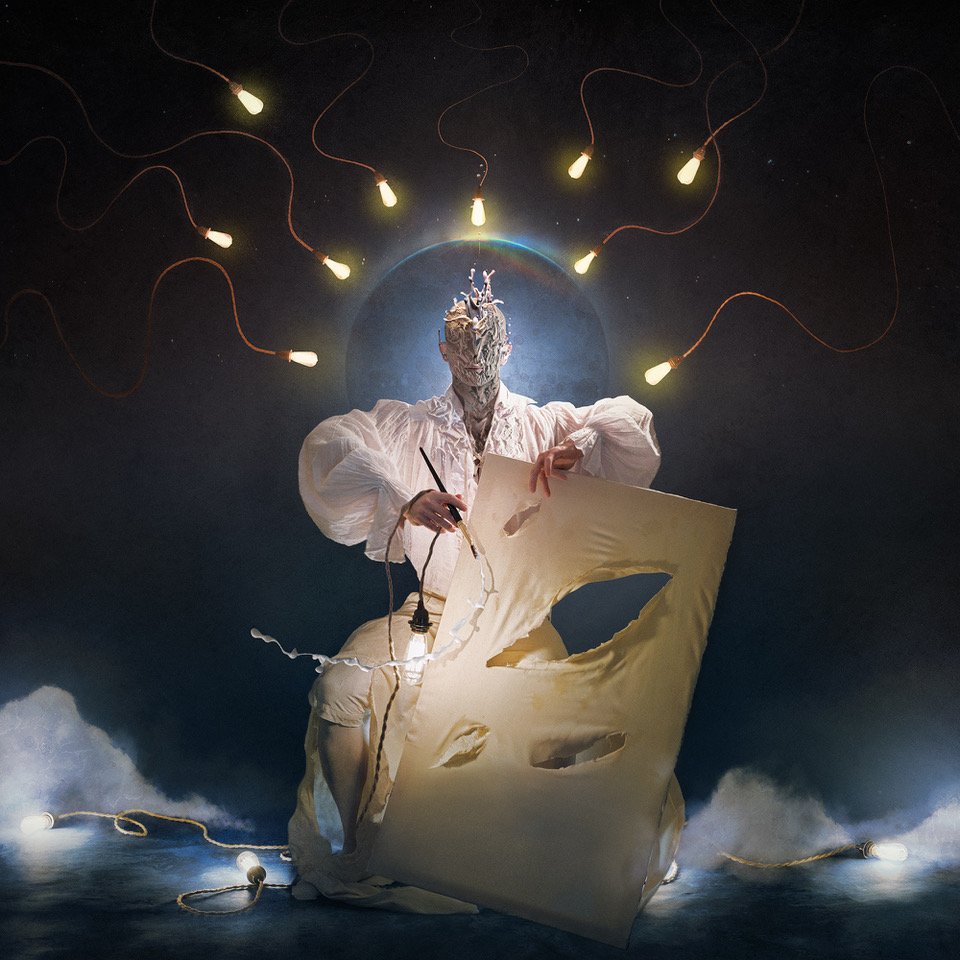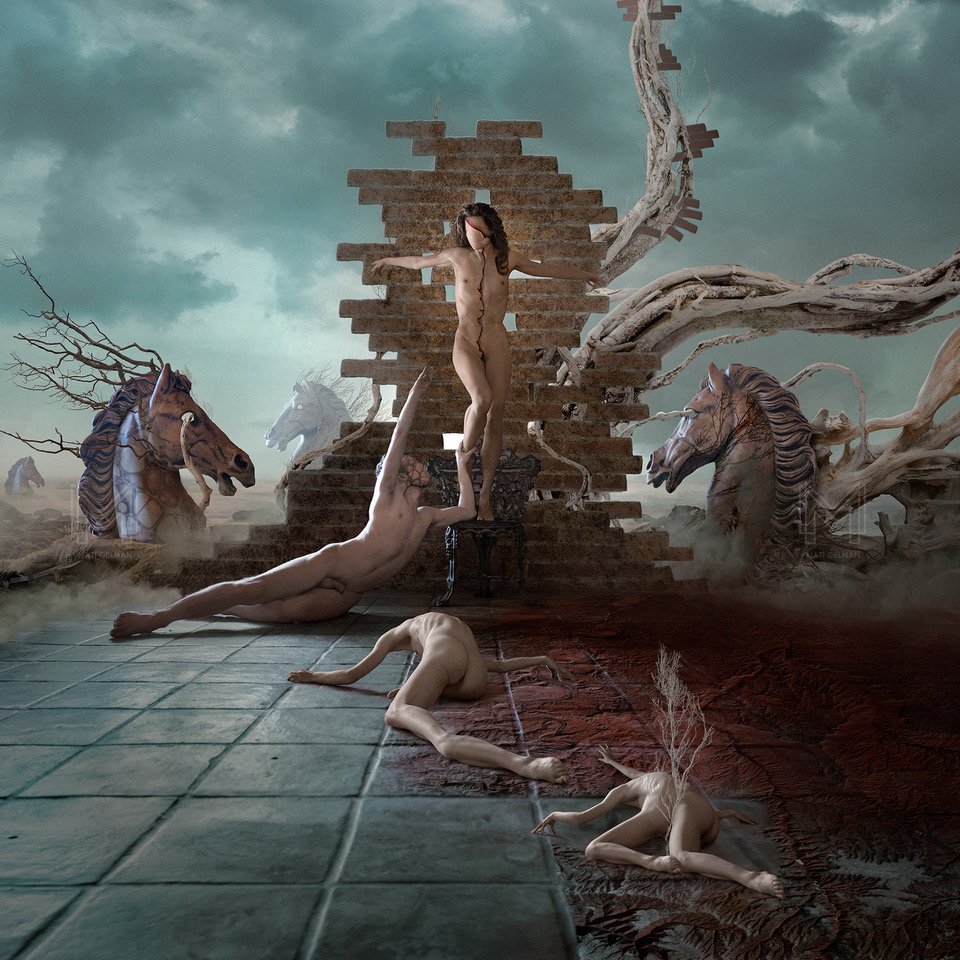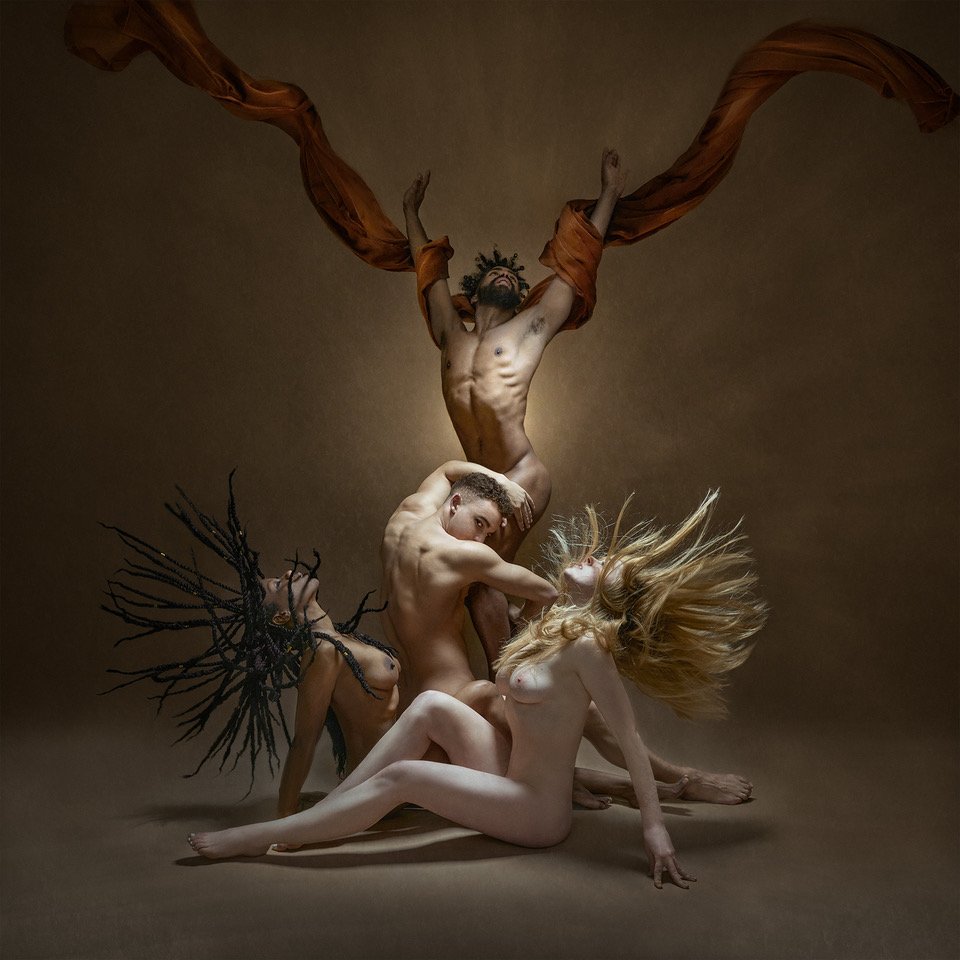Artist Mati Gelman
Congratulations to Mati Gelman for earning his place as a Winner in the Boynes Monthly Art Award March Edition!
Who are you?
I was born in Hungary. When I was six years old, my family relocated to Israel, where I grew up. In 2016, I moved to New York City with my husband. My integration into three different cultures had a big impact on who I am as a person. I never felt I belonged anywhere specific, yet I possess the ability to make myself feel at home where I am.
In 2015, I completed my M.Sc. in Chemistry and I wanted to start a career in scientific research. It was our decision to move to New York City which made me reexamine my then hobby, photography. My usage of a camera became non conventional very quickly. I enjoyed making collages because I found that my vision could never be fully realized in a single photograph. I was playing and didn’t perceive my images as art. I needed to be pushed by my husband, an artist himself, to see it for what it was.
I am like my art: a collage of different elements taken from different places.
“Buoyancy of Dreams”
Fine Art Photography
By Mati Gelman
What inspired you to utilize photography as a medium?
I’m a composite artist. I love surrealism with a “tangible reality”. Utilizing a camera is the best way to achieve this visually.
My analytical brain loves to explore what makes things tick and is attracted to the tangible and logical. Whereas my philosophical mind is attracted to anything non conventional. I marry these two sides of my mind by capturing these elements with my camera.
“Children of Light”
Fine Art Photography
By Mati Gelman
How would you describe your work?
My work, which explores queerness and human integration with nature, through composite and staged photography, evokes feelings of rapture, wonder, and unmooring in equal measure. Originally, I was a chemist, manipulating matter and molecules; now I manipulate pictures and pixels, balancing the granular with the grand.
“Conception”
Fine Art Photography
By Mati Gelman
Can you discuss the inspiration and thought process behind your winning work?
The main photographs in that image were taken at the Dead Sea. I photographed a dancer moving around on the salt sheets, which looked like ice, though the weather was oppressively hot. That natural environment is one of the harshest in nature - the high concentration of salt and heat make it very difficult for any living thing to exist there, yet, some do. Visually, it’s as absolutely stunning as it is deadly. These principals stand together with the rich and harsh history of this land. I titled it “Inhabitants”.
“Inhabitants”
Fine Art Photography
By Mati Gelman
Can you walk us through the technical steps of creating “Inhabitants”?
First, I photographed the dancer sitting down in front of a tree. The second image, which can be seen in the reflection, was created in contrast to the first one. In post processing, I inverted the image to act as a reflection and blended the two together. The clouds and the birds are taken from another trip I took in the United States.
I used a DSLR camera, and for post processing I used Capture One and Photoshop.
“Dangerous Game”
Fine Art Photography
By Mati Gelman
What do you hope to communicate to an audience with your work?
I have always felt misplaced and othered and I have learned so much from every culture I have encountered. I want people to identify their own humanity within that of a stranger. In the end, we are all we’ve got and we have so much we can learn from each other.
“Enigma”
Fine Art Photography
By Mati Gelman
Have you experimented with other mediums?
I have been dabbling with more digital tools like 3D - which is incredible - as well as with film. I have been printing on unconventional materials and my next step would be experimenting with mixed media to create unique pieces.
“Entangled”
Fine Art Photography
By Mati Gelman
Can you talk about your biggest learning experience during the process of creating your work?
I still make a lot of mistakes in the process of creating a composite, which is a rather technical process. There are steps that need to be followed in a certain order, in order to achieve a believable result in a composite. Since I am mostly self-taught, I had to develop my workflow step by step.
For example, it is better, from experience, to have every single item or subject that appears in a composite be fully cut out from its original environment. I think this is true generally in digital photography, although not always necessary.
Even if you end up using the original background/s - having a crisp and clear selection of the subject will help tremendously in every editing-based decision you’d need to make: color, compositing, shading, sharpening, or general retouching.
The mistakes I make usually translate to me not being able to make a clear selection around my subject/s, which makes things a lot harder and more complex. Every time I shoot, I get better at this. I remember what didn’t work in previous composites and so now I change small details in my lighting and set ups to overcome those problems. Photography, broken down, is basically always the same: camera, light, subject. I use the same camera, with the same light, and the same subject (human), every time. The workflow makes the difference.
“Flight”
Fine Art Photography
By Mati Gelman
Can you discuss your biggest success since starting your artistic journey?
My biggest successes always have to do with the people I get to meet and the people I get to learn from. When my work gets the attention of the artists that inspire me, it’s the most rewarding feeling there is.
Being celebrated by my mentors is the ultimate validation for all the hard work that goes into my art.
I don’t have an answer to how I “got noticed”, it all happened online. One of my all time favorite artists wrote to me, telling me they admire what I do and that I should keep going. We had a brief conversation and I got to ask questions and get some guidance. What else can an artist ask for?
“Fossil Fuels”
Fine Art Photography
By Mati Gelman
Can you tell something you wish you had known before or when you began your career that would have really helped?
A warning: art is a reflecting pool. The common misconception is that art as a hobby is fun and cute… and it’s true! At first, people create from the surface, imitating work that inspires them. When they wish to improve they inevitably have to dive inward. That’s where the intriguing, inspiring, and interesting work comes from. That’s where uniqueness dwells. That journey has a toll: you might not like what you discover about yourself.
“Framing Device”
Fine Art Photography
By Mati Gelman
What projects are you working on currently?
As of the time of this interview, March 2023, I am looking to establish my own studio. Until now, I have been creating at home or on trips. This will be a major upgrade to everything I do and I am very excited about this change. I have been doing a lot of planning - both business and art wise.
“Homeland”
Fine Art Photography
By Mati Gelman
What is your dream project or piece you hope to accomplish?
I have two weirdly specific goals: to create a mural for a museum and to work with Lady Gaga.
“Legion”
Fine Art Photography
By Mati Gelman
As a winner, do you have any advice for artists who want to submit to awards, competitions, residencies, etc.?
Put your “artist mind” aside and look at your work purely with a “business mind”. Every so often, I make time to sit down and submit to relevant contests, awards, scholarships, etc (I put it on my calendar to make sure I do it).
Submit intelligently - pay attention to what the publication/contest is about. For example, I don’t submit to awards or contests that mainly feature documentary-style photography even if they list “Conceptual” or “Fine Art Photography”. This will save you time and money.
Make sure you are subscribed to newsletters or social media pages that advertise these contests, collect them, and put them aside for your “business mind” to go through when it’s time.
“Symbiosis”
Fine Art Photography
By Mati Gelman
Lastly, I like to ask everyone what advice they would give to their fellow artists/photographers, what is your advice?
If you are a planner like me or have high attention to detail, don’t let these aspects hold back your vision. Work actively against this type of “creative block”. Create anyway, and then work to “fix” the work. It’s going to be very rewarding, because you will feel that you have learned and achieved something meaningful by going through this problem solving process. Allow yourself the freedom to create the “bad version” of your art, so you will at least have something tangible to fix.
For example: every now and then, I will have a clear vision of what I want an image to look like, however, once I get into the studio, I find that the shapes and poses that I’d believed were achievable range from difficult to impossible. So, rather than scrapping my entire vision, I try to come up with elements that come as close as possible to it. Then, I start “fixing it”. Move a limb, rotate the position, change the distance between myself and the model, etc. With each adjustment, I get closer to my vision. It works every time.
To view more of Mati Gelman’s work












